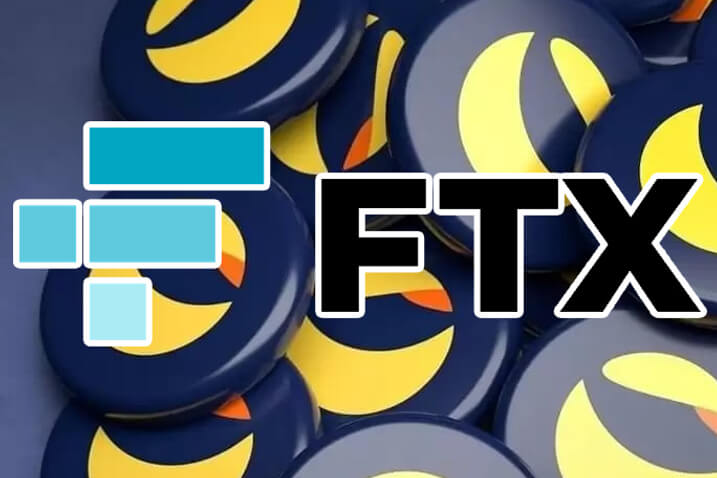FTX Luna Overview
FTX Luna, formerly known as Terra, was a blockchain ecosystem that aimed to revolutionize the decentralized finance (DeFi) industry. The project was founded in 2018 by Do Kwon and Daniel Shin, two entrepreneurs with backgrounds in computer science and finance. The project initially launched as a stablecoin platform, with the goal of creating a stable digital currency that could be used for everyday transactions. However, over time, the project evolved into a more comprehensive ecosystem, encompassing a range of DeFi products and services.Initial Coin Offering (ICO)
In 2019, FTX Luna conducted an initial coin offering (ICO), raising over $1 billion from investors. The ICO was a major success, and it helped to establish FTX Luna as one of the leading DeFi projects in the industry. Following the ICO, the project continued to grow rapidly, and it soon became one of the most popular DeFi platforms in the world.Key Executives
The FTX Luna team is led by a group of experienced entrepreneurs and executives. Do Kwon, the co-founder and CEO, is a computer scientist with a background in finance. Daniel Shin, the co-founder and COO, is a serial entrepreneur with experience in the tech industry. Other key executives include Alex Kim, the Head of Product, and Edward Kim, the Head of Engineering.Luna's Ecosystem: Ftx Luna
Ftx luna - Luna's ecosystem is a complex and interconnected system of protocols and applications built on the Terra blockchain. The ecosystem's core components include Terra, UST, and Anchor Protocol, each of which plays a vital role in maintaining the ecosystem's stability and growth.
Terra, Ftx luna
Terra is the blockchain that underlies the Luna ecosystem. It is a Proof-of-Stake (PoS) blockchain that uses the Luna token as its native currency. Terra is designed to be fast, scalable, and secure, and it supports a wide range of decentralized applications (dApps).
UST
UST is a stablecoin that is pegged to the US dollar. It is backed by a reserve of Luna tokens, which are automatically minted or burned to maintain the peg. UST is used as a medium of exchange within the Luna ecosystem and is also used to pay for gas fees on the Terra blockchain.
Obtain direct knowledge about the efficiency of lcx crypto through case studies.
Anchor Protocol
Anchor Protocol is a decentralized lending and borrowing platform that is built on the Terra blockchain. Anchor Protocol allows users to lend UST and earn a fixed interest rate. The interest rate is paid out in Luna tokens, which are automatically staked to generate additional yield.
Interaction of Components
The components of the Luna ecosystem interact in a number of ways to maintain the ecosystem's stability and growth. For example, Terra provides the underlying infrastructure for the ecosystem, while UST provides a stable medium of exchange. Anchor Protocol, in turn, provides a way for users to earn interest on their UST holdings, which helps to increase demand for UST and Luna.
Real-World Applications
The Luna ecosystem has a number of real-world applications. For example, UST is used as a stable medium of exchange in a number of countries, including South Korea and Vietnam. Anchor Protocol is also used by a number of businesses to provide loans and other financial services.
Luna's Value Proposition

Luna, the native token of the Terra blockchain, distinguishes itself in the cryptocurrency landscape with a compelling value proposition that sets it apart from its peers. Its unique design and inherent advantages make it a compelling choice for investors seeking scalability, security, and cost-effective transactions.
Scalability
Luna boasts an impressive scalability that enables it to handle a high volume of transactions without compromising speed or efficiency. The Terra blockchain leverages a unique consensus mechanism called Tendermint, which allows for rapid transaction processing and network finality. This scalability makes Luna an attractive option for applications that require high throughput and real-time processing.
Security
Security is paramount for any cryptocurrency, and Luna delivers on this front. The Terra blockchain employs a robust Proof-of-Stake (PoS) consensus mechanism, which incentivizes validators to maintain the integrity of the network. Additionally, Luna's smart contract platform undergoes rigorous audits and security assessments to ensure the safety of user funds and applications built on the blockchain.
Transaction Costs
Luna stands out for its exceptionally low transaction costs, making it an appealing choice for users who frequently engage in cryptocurrency transactions. The Terra blockchain's efficient design and use of stablecoins minimize transaction fees, allowing users to transfer funds and interact with applications without incurring significant costs.
Perceived Value
Luna's perceived value among investors is influenced by several factors, including its strong technical foundation, growing ecosystem, and the stability provided by its stablecoin, UST. The Terra blockchain's focus on real-world use cases and its ability to facilitate decentralized finance (DeFi) applications have also contributed to Luna's increasing popularity and value.
When investigating detailed guidance, check out binance paypal now.
Luna's Market Performance
Luna's market performance has been characterized by significant volatility, with its price experiencing both rapid gains and sharp declines. The token's value has been influenced by various factors, including market sentiment, project developments, and broader macroeconomic conditions.
Historical Price Performance
Luna's price has witnessed several key milestones and events that have shaped its market trajectory. In 2021, the token surged to an all-time high of over $100, driven by the growing popularity of the Terra ecosystem and the rising demand for stablecoins.
However, in May 2022, Luna's price plummeted to near zero, resulting in a massive loss of value for investors. This collapse was primarily attributed to the de-pegging of the TerraUSD (UST) stablecoin, which triggered a cascade of liquidations and sell-offs.
Factors Influencing Price Volatility
Several factors have contributed to Luna's price volatility, including:
- Project Developments: Positive news and updates regarding the Terra ecosystem, such as new partnerships or product launches, have generally had a positive impact on Luna's price.
- Market Sentiment: The broader cryptocurrency market sentiment has also played a role in Luna's price fluctuations. During periods of bullish sentiment, Luna has tended to perform well, while during bearish periods, its price has often declined.
- Macroeconomic Conditions: Economic factors, such as inflation and interest rate changes, can also affect Luna's price. For example, during periods of economic uncertainty, investors may sell risky assets like cryptocurrencies, which can lead to a decline in Luna's value.
Long-Term Prospects and Risks
The long-term prospects for Luna remain uncertain, but the project continues to have a strong team and a loyal community. The Terra ecosystem is also undergoing a significant restructuring, which could potentially improve Luna's stability and value.
However, there are also risks associated with investing in Luna, including the possibility of further price volatility and the potential for regulatory challenges. Investors should carefully consider these risks before investing in Luna.
Luna's Competitors and Market Share
In the cryptocurrency market, Luna faces competition from established players and emerging altcoins. Its primary competitors include Ethereum, Binance Smart Chain, Solana, Avalanche, and Polygon.
Market Share Comparison
As of [insert date], Luna holds a significant market share in the cryptocurrency market. According to CoinMarketCap, Luna ranks among the top 10 cryptocurrencies by market capitalization. However, its market share fluctuates due to market dynamics and competition.
In this topic, you find that messari crypto is very useful.
Competitive Landscape
The competitive landscape for Luna is characterized by intense competition and innovation. Ethereum, Binance Smart Chain, and Solana are established platforms with large user bases and developer communities. Avalanche and Polygon are gaining traction as scalable and cost-effective alternatives.
Luna's Strategies
To gain market share, Luna has adopted several strategies:
- Focus on DeFi: Luna has positioned itself as a hub for decentralized finance (DeFi) applications, offering a range of DeFi services such as lending, borrowing, and staking.
- Interoperability: Luna has developed bridges to connect with other blockchains, enabling seamless asset transfer and interoperability.
- Developer Support: Luna provides comprehensive developer tools and resources to attract and support developers building on its platform.
- Marketing and Partnerships: Luna actively engages in marketing campaigns and forms partnerships with industry leaders to increase awareness and adoption.
Luna's Regulatory Environment

Luna, like other cryptocurrencies, operates within a rapidly evolving regulatory landscape. Governments and regulatory bodies worldwide are actively developing and implementing frameworks to oversee the cryptocurrency industry, including Luna.
The regulatory landscape for cryptocurrencies is complex and varies significantly by jurisdiction. Some countries have adopted a more proactive approach, implementing comprehensive regulations to govern the issuance, trading, and use of cryptocurrencies. Other countries have taken a more cautious approach, opting for a wait-and-see attitude or implementing only limited regulations.
Compliance Efforts and Strategies
In response to the evolving regulatory landscape, Luna has implemented a number of compliance measures and strategies to ensure its operations are compliant with applicable laws and regulations.
- Know-Your-Customer (KYC) and Anti-Money Laundering (AML) Procedures: Luna has implemented KYC and AML procedures to verify the identity of its users and prevent the platform from being used for illegal activities.
- Registration with Regulatory Bodies: Luna has registered with relevant regulatory bodies in certain jurisdictions, such as the Financial Crimes Enforcement Network (FinCEN) in the United States.
- Collaboration with Law Enforcement: Luna collaborates with law enforcement agencies to combat financial crime and other illegal activities involving cryptocurrencies.
By implementing these measures, Luna aims to demonstrate its commitment to compliance and responsible operations, mitigate regulatory risks, and build trust with users and regulators.
Potential Impact of Regulatory Changes
Regulatory changes can have a significant impact on Luna's operations and market value. Positive regulatory developments, such as the adoption of clear and supportive frameworks, can provide clarity and certainty for businesses and investors, potentially boosting Luna's adoption and value.
Conversely, negative regulatory developments, such as the implementation of restrictive measures or outright bans, can hinder Luna's growth and negatively impact its market value. Luna closely monitors regulatory developments and adapts its operations accordingly to minimize the potential impact of adverse regulatory changes.
Luna's Future Prospects
 Luna's future prospects appear promising, with the company poised for continued growth and expansion. Luna has established a strong foundation in the decentralized finance (DeFi) space and has plans to further develop its ecosystem and product offerings.
Luna's future prospects appear promising, with the company poised for continued growth and expansion. Luna has established a strong foundation in the decentralized finance (DeFi) space and has plans to further develop its ecosystem and product offerings. 